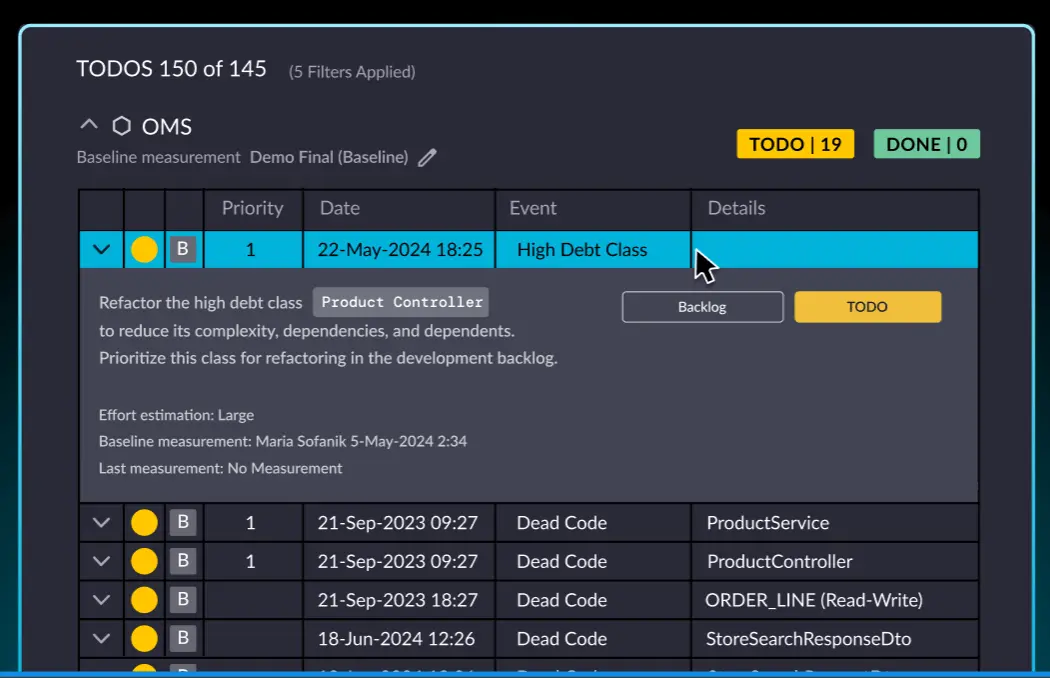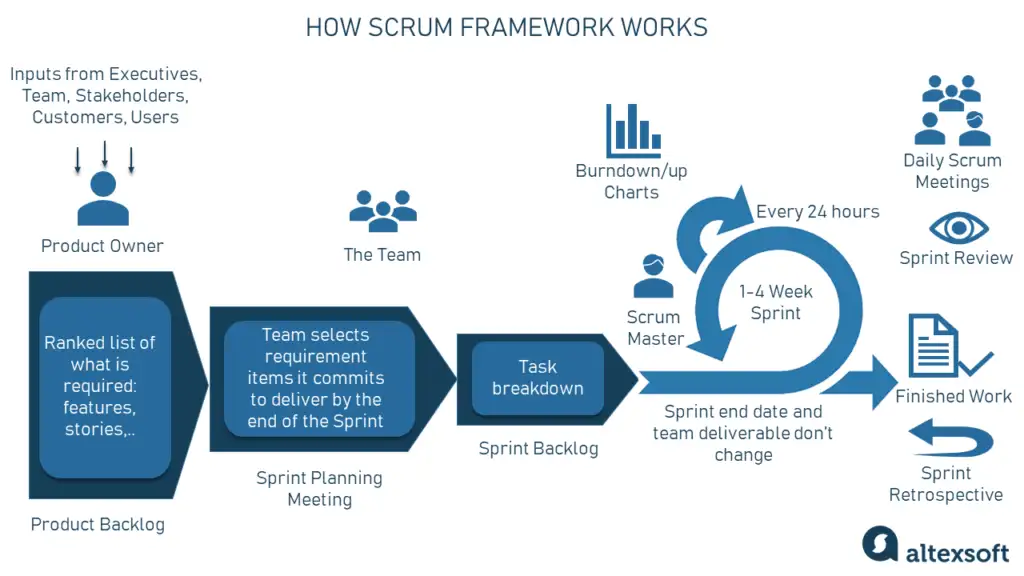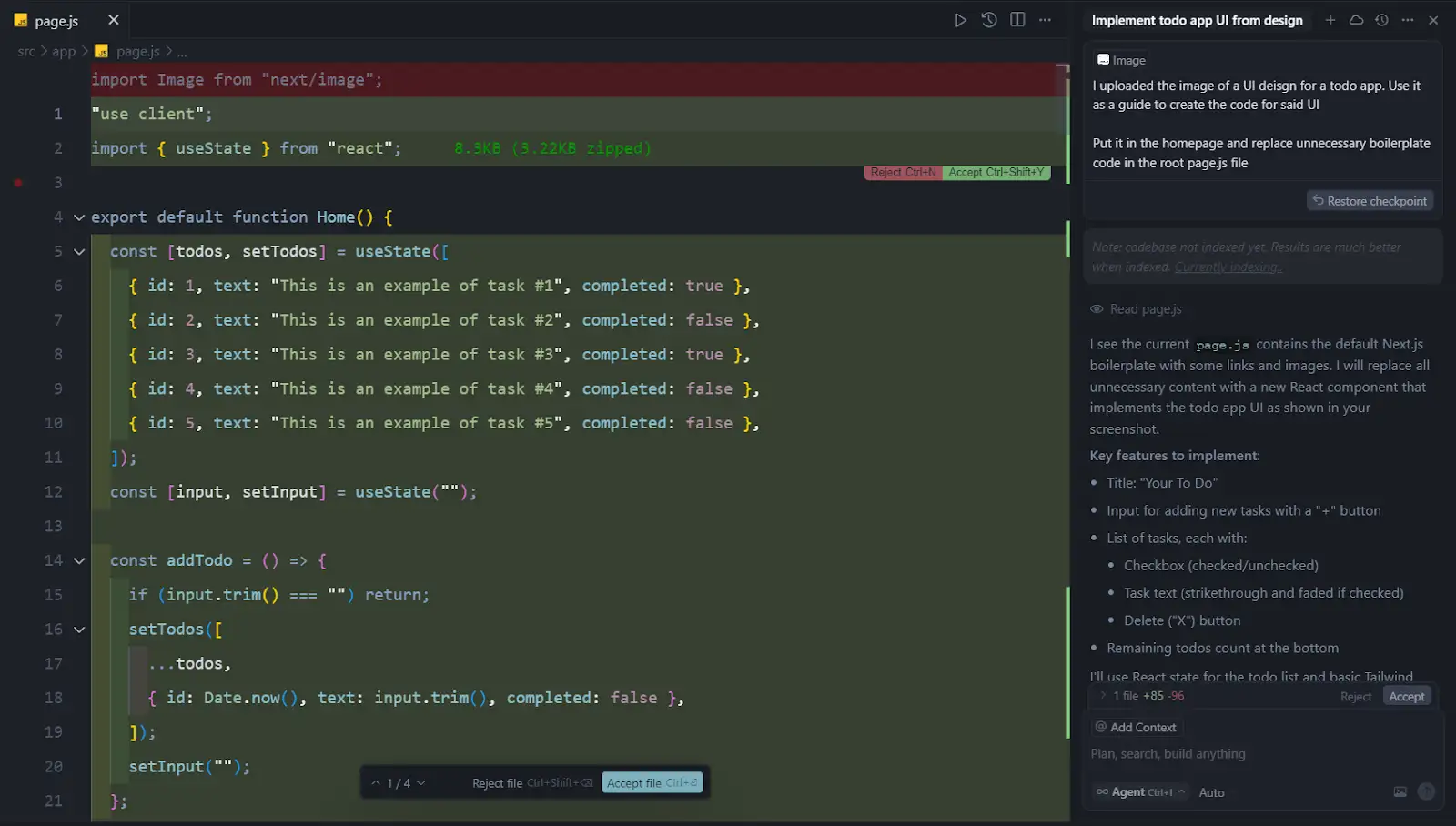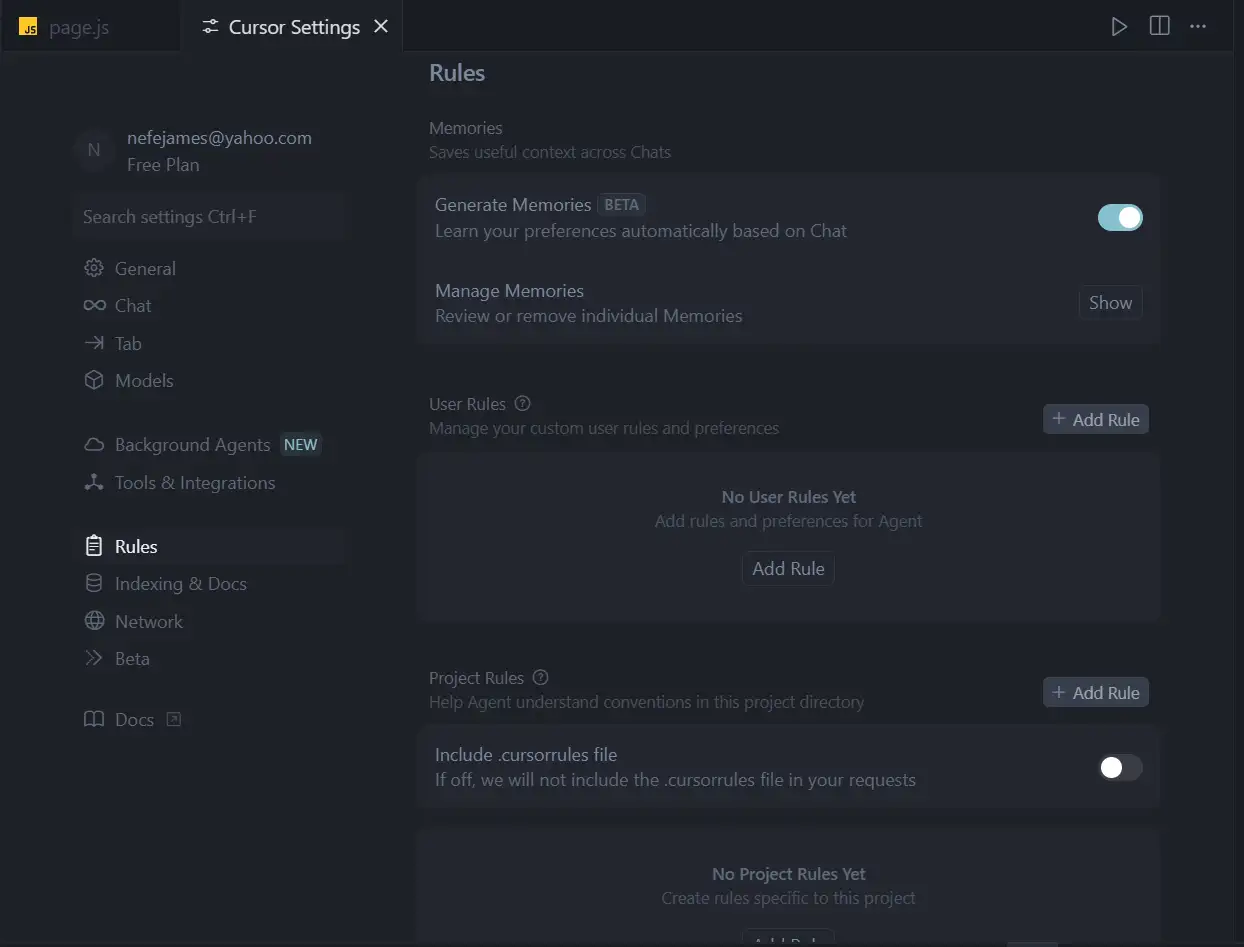Here’s one thing most project managers, software developers, and engineering leaders can agree on: You can’t escape technical debt. Even with the best intentions and systems—especially those set at the start of a new project—it always creeps in.
Technical debt is a necessary evil that, if unmanaged, can lead to slower development cycles, rising maintenance costs, frustrated teams, and products that become harder to scale. This article will cover how to spot it, ways to measure it, and management strategies to apply so that it doesn’t slow down or cripple product development.
What is technical debt?
Technical debt is the baggage a codebase carries when trade-offs, outdated tools, or weak practices pile up. At the highest level, technical debt falls into two core categories: deliberate and accidental. Everything else you hear about—whether it’s outdated tools, weak testing, or poor processes—fits under one of these two. Each one has different causes and impacts but has to be actively managed to prevent them from growing unchecked.
Types of technical debt
Deliberate debt. This is when your team knowingly takes shortcuts to move faster. Maybe you skip certain tests, delay performance optimization, or want to ship a proof of concept (POC), or a minimum viable product (MVP) faster, with planning to clean it up later. It’s a strategic choice, but it only pays off if you come back to fix it before the “interest” gets too high.
Accidental debt. This debt creeps in without intention. It can be the result of limited knowledge, poor communication, or simply not foreseeing how the system will need to scale. Outdated frameworks and libraries also fall here—what worked well years ago may now be unsupported, leaving you with hidden costs.

Recognizing technical debt: signs and red flags
Technical debt isn’t always obvious. It tends to build slowly until it starts to interfere with everyday development work. Spotting the signs early can save you from bigger problems later. Here are some of the most common red flags.
Increasing bug frequency. If the same areas of code keep breaking or new features consistently introduce bugs, it’s often a sign that the underlying structure has become fragile.
Slower development velocity. Features that used to take days now take weeks. The more debt in a codebase, the harder it is to add or change anything without side effects. This slowdown eventually shows up in product metrics too. Things like release frequency, lead time, or customer-facing cycle time start to dip, signaling that technical debt is a drag on the team’s ability to deliver.
High onboarding time for new developers. When new team members struggle to understand the code or need heavy handholding, it usually means the system is too complex or poorly documented.
Inconsistent coding patterns. Different styles, approaches, and naming conventions across the codebase make it harder to read, maintain, and extend. This inconsistency is a hallmark of unmanaged debt.


How to measure and track technical debt
It’s easy—and maybe even tempting—to ignore technical debt since it doesn’t always translate directly into dollars or hours. However, if not tracked, it’ll eventually slow you and your team down. While it isn’t as straightforward to measure since you can’t put an exact number on it—unlike, say, financial debt—here are some ways to go about it.
Code quality metrics
Software quality metrics give you a way to put numbers behind what’s often a gut feeling—whether your codebase is healthy or quietly piling up technical debt. Instead of relying only on intuition, these metrics provide a snapshot of how reliable, maintainable, and scalable your system really is.
Here are the key quality metrics worth tracking
- Reliability metrics: Does your software consistently perform as expected? Spot and fix high-priority bugs in production and perform load and stress tests to know how stable your software is.
- Performance efficiency metrics: Does your software run smoothly and efficiently? Keep an eye on resource usage, response times, and scalability to see if it can handle growth without slowing down or breaking.
- Security metrics: How safe is your system and how quickly does your team respond to threats? Track the time it takes to patch vulnerabilities and react to security incidents.
- Maintainability metrics: How easily can you work with and improve your codebase? The lines of code, cyclomatic complexity (how many different paths or decision points exist in the code), and code consistency reveal whether it’s clean or messy under the hood.
- Rate of delivery metrics: How quickly can your team ship new features and make improvements? Track the release frequency and the number of user stories delivered.
- Testability metrics: How much of your codebase is covered by automated tests, and how long does it take to run them? Strong test coverage and efficient test execution mean you can confidently make changes.
Tracking these metrics regularly helps you spot hidden technical debt early, make informed decisions, and keep your codebase healthy as your project grows.
Automated tools
Platforms like SonarQube, vFunction, and CAST Highlight scan your codebase and flag problem areas. They measure things such as code complexity, duplication, test coverage gaps, and potential bugs.

The advantage is that you can see trends over time instead of guessing which parts of the code are slowing you down. For example, if a critical module keeps showing high duplication scores, you know it’s accumulating debt and needs attention before it becomes a blocker.
Estimating in developer hours or cost
Another approach is to quantify debt in terms of the time it will take to fix or refactor. For instance, cleaning up a messy module might take 10–15 hours. You can then show stakeholders that ignoring it costs additional time every sprint because developers are working around it. Translating debt into hours or dollars makes the trade-off clear: Spend time now to fix it or pay interest later in slower development and increased bugs.
Technical debt ratio (TDR)
In this approach, you compare principal (effort needed to resolve the debt) to interest (extra time spent dealing with the consequences of the debt). For example, if fixing a database schema takes 20 hours, but during every sprint your team spends 2 hours working around the problem, the interest quickly accumulates. By tracking this ratio, you can prioritize the highest-impact areas—modules where the “interest” costs your team the most.
How to reduce technical debt in your infrastructure
While technical debt can’t always be avoided, there are scenarios that should never occur in the first place. For example, cutting corners on basic coding standards or skipping peer reviews isn’t a trade-off—it simply invites future headaches. The good news is, there are steps you can take to prevent debt from piling up.
Enforce coding standards
Agree on shared coding rules and make them part of your team’s workflow. For example, using the same naming conventions, leaving thoughtful comments, folder structures, and formatting across your team prevents messy code that slows everyone down later.
Also, if you follow the Boy Scout rule (Leave the codebase cleaner than you found it), it’ll be easier to maintain. When everyone treats code quality as part of the job, debt doesn’t creep in unnoticed. This will reduce the likelihood of new debt arising from poor code quality.
Perform regular code reviews
Catch smaller issues before they become bigger problems. Reviewing each other’s code helps you spot mistakes, enforce standards, and mentor junior developers. Shortcuts won’t pile up into unmanageable debt if everyone contributes to maintaining quality.
Refactor as you go
Don’t wait for a big rewrite. Instead, improve the code as you add features. Cleaning up functions, simplifying logic, updating libraries, or removing duplicates in small chunks keeps your codebase healthy. Over time, these tiny fixes save you from massive headaches.
Use proactive testing practices
Baking quality into your development process from the start is one of the most effective ways to prevent debt. Start with Test-Driven Development (TDD) or Behavior-Driven Development (BDD) to make your code naturally testable and aligned with requirements. Set up automated quality gates in your CI/CD pipeline to check coding standards, test coverage, and run static analysis on every commit. Catching problems while they’re small keeps fixes cheap and avoids hidden debt from accumulating.
How to manage technical debt
Even with the best practices in place to minimize technical debt, it will eventually appear. The following tips will help you manage it.
Acknowledge debt as part of the process
The first step is acceptance. Treat technical debt as a normal part of software development; do not hide it as something to be ashamed of. Make it visible by logging debt items in your backlog just like any other task. When everyone—from developers to project managers—can see what needs attention, it’s easier to prioritize and plan for fixes.
Communicate with stakeholders
Technical debt isn’t just a “developer problem.” To get buy-in, frame it in business terms. Explain how accumulated debt can slow release cycles, increase maintenance costs, or create risks in production. Showing the impact in real-world terms helps executives and non-technical stakeholders understand why addressing debt matters right now and should not be put off until later.
Prioritize debt strategically
All technical debt is not equally harmful. Identify which parts of the system are causing the most friction—like slow CI builds, frequently broken modules, or critical bugs—and tackle those first. Think of it like paying down the “highest interest” debt first. Using a simple scoring system (impact × likelihood × effort to fix) can help you rank debt items and focus on what will give the biggest payoff.
Allocate dedicated time
Debt ignored is debt accumulated. Schedule regular windows to address it, whether that’s a portion of each sprint, “refactoring Fridays,” or dedicated maintenance sprints. This time can be spent improving tests, cleaning up messy code, updating code documentation, or refactoring key modules. The important part is consistency: Small, incremental improvements prevent debt from spiraling out of control.
Empower developers to raise red flags early
Developers working closest to the code should feel comfortable flagging debt before it grows. Encouraging open discussions and creating space for debt-related feedback in standups or retros keeps the issue visible. A culture that acknowledges technical debt doesn’t aim to remove it entirely but ensures it’s handled in a way that balances short-term goals with long-term stability.
Managing technical debt in Scrum
Technical debt shows up in Scrum because of the fast pace of sprints and the constant push to deliver working software. A team might cut corners to meet a sprint commitment, and over time, these shortcuts pile up into debt that slows down future sprints.
Besides intentional shortcuts, debt can also appear when the team learns more about the problem and realizes that past design decisions don’t scale or no longer fit the problem. Debt can also show up when the definition of “done” changes. Suddenly, work that was once “complete” doesn’t meet today’s higher standards.

Scrum doesn’t explicitly define who “owns” technical debt, so managing it can feel like a gray area. In reality, debt is a shared responsibility. The Product Owner cares because unmanaged debt reduces long-term product value, while the development team must ensure that each increment meets the agreed definition of done.
Ways to keep technical debt under control in Scrum include adding it to your product backlog (like you would features and bugs), breaking down debt items into clear tasks with effort estimates, and reserving a percentage of each sprint (e.g., 10–20 percent) for addressing any debt that exists.
Another thing that helps is using sprint retrospectives to identify where debt was introduced and agreeing on improvements for the next sprint.
The role of vibe coding in technical debt
Vibe coding is a fairly new approach in software development, coined by Andrej Karpathy, a leading AI researcher and former Director of AI at Tesla, in early 2024. Instead of sitting down and writing every line of code yourself, you lean on large language models (LLMs) embedded in AI coding tools like Cursor.
You give the AI simple prompts or plain-language descriptions of what you want the software to do, and it generates the code. Your role shifts more toward guiding, testing, and refining, rather than manually handling every detail.

This type of AI-driven software development makes it easier and faster to build prototypes or test ideas, but it also introduces a new layer of technical debt. Because you’re not always reviewing the code in detail, you risk carrying forward hidden bugs, security gaps, or inconsistent structures that may slow you down later.
The issue becomes trickier if it’s someone without experience, since they may not understand the code being generated or spot subtle bugs. If the code generator produces flawed output, they might unknowingly ship it to production. Eke Kalu, Software Engineer at AltexSoft, shared his experience with Cursor’s behavior: “Cursor can be tricky. I once gave it a set of tests to make sure any code it generated would pass. After failing several times, instead of fixing the code to pass the tests, it rewrote the tests to match the flawed code.” He was able to spot this because he had the technical know-how. Without it, this issue could have easily become technical debt in the future.


Due to this gap in technical know-how caused by the vibe-coding era, we’re now seeing the emergence of a new role in the software development space: vibe-coding cleanup specialists. On platforms like LinkedIn, many professionals are now positioning themselves as experts who help non-technical founders or hobbyists who have built apps with AI tools. These apps often “work,” but they’re buggy or full of vulnerabilities. Cleanup specialists step in to stabilize the product, refactor the code, and close the gaps—essentially cleaning up the hidden debt left behind by rapid, AI-driven development.
Instead of waiting for issues to gather, here are some strategies you can incorporate into AI-driven software development workflows:
Bring in vibe-coding AI specialists early. Instead of waiting until an app is buggy, involve engineers who understand AI tooling and software fundamentals to guide prompt-writing, review generated code, and keep the structure maintainable from the start.
Verify auto-generated tests. Don’t blindly trust the tests AI tools write for you. Always run independent checks to ensure the tests aren’t just validating broken code.
Use coding prompt templates. Instead of writing free-form prompts to an AI tool, create reusable templates that include your team’s coding standards. For example, a template might say: “Write Python code following PEP 8 naming conventions, include type hints, and add unit tests with pytest.” Another could be: “Generate a React component with functional components only, Tailwind for styling, and no inline CSS.”
Add AI guardrails. Put automated systems in place—like linters, static analysis, security scanners, and test coverage thresholds—so that any code produced by AI must clear these quality gates before merging. Cursor and similar tools let you define custom rules (both global and project-scoped) that the AI must follow, which makes things more predictable. You can also add review guardrails, like a senior developer or vibe-coding cleanup specialist, who sign off before AI code is shipped.

Educate non-technical builders. Simple workshops or checklists can help founders and hobbyists understand coding basics and why reviewing AI output matters.
These steps won’t eliminate vibe coding’s technical debt risks. Still, they make the approach more sustainable and reduce the chances of creating fragile, unmaintainable software.
Ensure consistency in multi-agent workflows. There are scenarios where projects require agent-to-agent communication. In such cases, the more agents you add, the greater the risk of inconsistencies and hallucinations. To reduce this, introduce a single source of truth—a clear map of entities and relationships that defines how inputs, outputs, and data flows connect. This map helps you generate a consistent code structure with templates while letting the AI handle only specific sections of your codebase.

With a software engineering background, Nefe demystifies technology-specific topics—such as web development, cloud computing, and data science—for readers of all levels.
Want to write an article for our blog? Read our requirements and guidelines to become a contributor.

